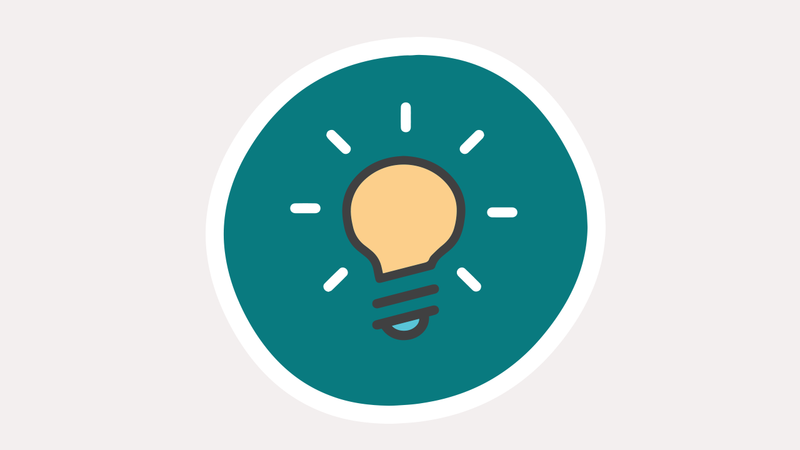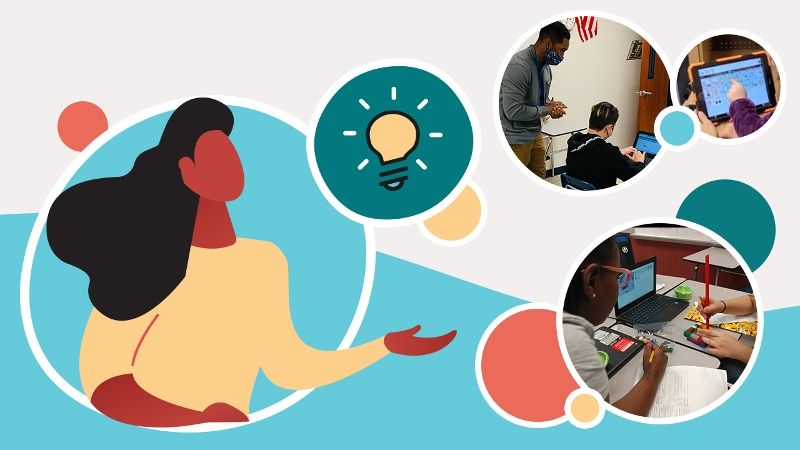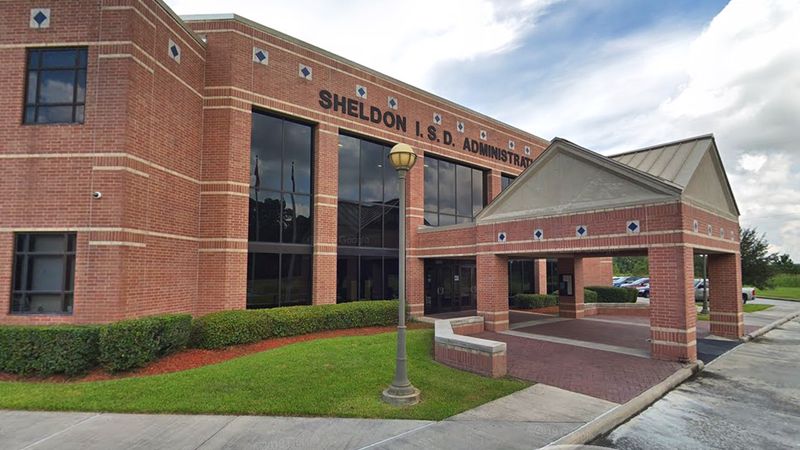Design Learner-Centered Experiences

Get Started Developing Technology Competencies:
To design and deliver learner-centered experiences, districts must first prioritize the development of all educators’ skills. This forms the foundation for building cohesive, inclusive, and accessible learning opportunities. Taking it a step further, they must strategically schedule time for staff to collaboratively design learning opportunities that consider the variability of learner needs and promote the use of assistive technologies to support those needs.
Practice: The district prioritizes the development of all educators’ skills to design and deliver accessible, learner-centered experiences.
Actions districts can take to support the design of learner-centered experiences include:
- Provide opportunities to design and deliver: The district provides opportunities for educators to learn how to proactively design and deliver learner-centered experiences using technology.
- Provide opportunities to collaborate: The district provides opportunities for educators to proactively collaborate across special and general education in the design and delivery of learning experiences.
- Provide opportunities to use AT: The district provides guidance to educators on how to proactively include the use of AT for students with disabilities in the design and delivery of learning experiences.
Learn from Our Partners

- Blog Post: Five Things EdTech Leaders Need to Know About Inclusive Technology Systemsexternal site, UDL Center
- Podcast: Creating A Framework for Inclusive Technologyexternal site, CoSN Podcast
- Webinar: Prioritizing Inclusive Technology Practices for Student-Centered Learningexternal site, Educating All Learners Alliance
- Webinar Series: Learning with the Authors of Inclusive Learning 365, Center on Inclusive Technology in Education Systems (CITES) at CAST
- Case Story: BCSP | Baltimore, MDPDF document
Resources
- IEP/504 Plans in Virtual LearningPDF document, Center on Inclusive Technology & Education Systems (CITES) at CAST
- UDL Credential 1: Mindsetexternal site, CAST
- UDL Credential 2: Analysisexternal site, CAST
- 5-15-45 Toolexternal site, TIES Center
Sheldon's Story

Sheldon Independent School District (Houston, Texas)
Sheldon Independent School District (ISD) serves approximately 10,000 students in Houston, Texas. Six years ago, the district started moving toward a personalized, student-centered learning model. For example, the district developed “Compass Schools” at the elementary level, offering families and students choice among two science, technology, engineering, and mathematics schools; two high-tech schools; and two schools focused on performing arts and the visual arts plus instituting personalized learning pathways at the middle and high school levels. The district shared that it has undergone a systemic effort to address the needs of unique learners by providing training in the use of Universal Design for Learning (UDL) to all teachers, both general education and special education teachers, as well as instructional staff and district leaders. Sheldon ISD’s mission statement highlights a belief in the importance of personalized learning to ensure that all students graduate college and career ready and embracing technology and UDL principles were key elements in helping meet that vision.
In the last three years, the district launched preservice professional development activities with a 4-day conference focused on the needs of individual learners and special populations, helping teachers learn how to use and apply accessible technology tools in the general education classroom. Reflecting a district belief that personalized and accessible learning tools should be available to all students, the district used local funds to purchase districtwide licenses for supportive access tools. For example, all teachers in both general and special education have access to a digital repository of UDL strategies and supports, as well as technology tools with built-in accessibility features. In addition, classroom teachers receive student profiles that outline students’ cognitive processing strengths and weaknesses and suggest potential strategies and technology tools to support learning. These profiles are used during professional learning communities and collaborative planning to align technology supports with content and lesson delivery. The district shared that the use of accessible technology supports for all students is woven into its district improvement plan. Teachers are encouraged to reflect on student strengths and learning needs as they plan lessons and integrate technology supports to personalize learning. The district shared that sometimes personalization means a device or technology; other times, it may be a relationship and connection: “Personalization is an attitude of finding the ‘hook’ for each student, whether the environment, the device, or [a] personal connection.”
Supporting Research
- King-Sears, M. E., & Johnson, T. M. (2020). Universal Design for Learning chemistry instruction for students with and without learning disabilities. Remedial and Special Education, 41(4), 207–218.
- Borup, J., Chambers, C. B., & Stimson, R. (2019a). Online teacher and on-site facilitator perceptions of parental engagement at a supplemental virtual high school. The International Review of Research in Open and Distributed Learning, 20(2). https://doi.org/10.19173/irrodl.v20i2.4237external site